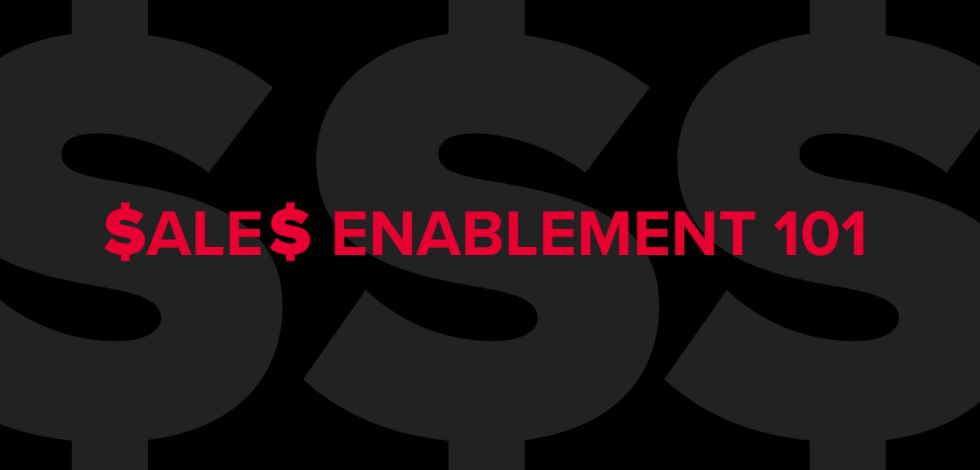Content marketing is an important part of any brand’s marketing strategy, but if your business isn’t sure how to use it, you won’t maximize your overall success.
A proper content marketing plan can create substantial value for any organization, which is why it’s vital to have an overall strategy in place. Here are some stats to consider:
- Content marketing costs 62% less than traditional marketing (Demand Metric)
- Content marketing methods convert 6x more often than other marketing methods (Aberdeen)
- Content marketing produces 3x more leads per dollar spent (Demand Metric)
- Content marketing is 13x more likely to generate ROI (HubSpot)
- 72% of marketers said that having a good content strategy was a major key to their success in 2018 (B2B Content Marketing)
Read on to learn more about how to put a strong content marketing strategy together—and how you can maintain it in the long term.
![]()
What is a Content Strategy?
A content strategy refers to the management of any tangible media that you create and own: written, visual or downloadable. So, what are some things to consider when building a strategy?
You’ll need to determine:
- Who you’re creating content for
- The content formats you’ll focus on
- What kind of messages you’ll be focusing on (what makes you unique)
- How you’ll manage your content once it’s published (who will manage certain tasks)
You might be asking why you need a content strategy, though. Developing your content strategy first can establish a base understanding of your marketing efforts and provide guidance that the rest of your organization can follow. In doing this, you’ll attract more leads, generate more overall awareness for your brand and educate your target audience. Think of the content strategy as your "why." Your content needs to have a purpose that has been well thought out and generates movement toward the vision of your business. Content creation is critical for the growth of your business, and a well-executed content strategy is the key to this.
Putting Together an Effective Plan
Now that we have a base understanding of what a content strategy is and why it’s important—let’s start to put one together.
There are eight steps that piece together a concrete strategy, starting with your goals.
Step One: Define Your Goals

Goals that you’re trying to achieve with your content could include improving brand awareness or working to generate more conversions. Whatever the case is, each piece of content that you plan to produce should build toward achieving your goals.
Take the time to develop both short- and long-term goals for your content strategy. Craft a three-year or five-year vision of how you want your company to look and then create quarterly and yearly content goals that work toward that vision. Your content plan should detail out how each of your goals will be met.
When creating your goals, use the SMART acronym to help guide you:
- Specific
- Measurable
- Attainable
- Relevant
- Timely
By using this acronym, you will ensure that your goals are tangible and achievable. SMART can encourage you to set more defined objectives, more defined completion dates and can provide your team more clarity on what is expected of them.
Once your goals are established, it’s time to start researching your audience so you can optimize your efforts by communicating with the right people.
Step Two: Research Your Audience
 To best understand your target audiences, you’ll need to conduct some research on who it is your content should be reaching. Research can be conducted through primary research, like focus groups or surveys, or you can use 3rd-party resources to explore more general information. Anecdotal research including customer and internal team interactions can also be beneficial in understanding your target audiences better.
To best understand your target audiences, you’ll need to conduct some research on who it is your content should be reaching. Research can be conducted through primary research, like focus groups or surveys, or you can use 3rd-party resources to explore more general information. Anecdotal research including customer and internal team interactions can also be beneficial in understanding your target audiences better.
While primary research and statistical information are useful, anecdotal research can help provide you with the "why" behind the data. Hearing stories from customers (current or former) or internal team members can uncover hidden information that expands upon your research efforts. In all, these are powerful research methods that work together to give you a more holistic idea of what you need to do.
However you conduct your research, here are some items that should be considered:
- Audience demographics
- Audience psychographics
- Current pain points and/or information needs
- Preferred content formats
- Preferred digital channels and social platforms
Remember that your content is only as good as the audience it reaches. Ensuring your audience research is executed properly goes a long way toward having an effective strategy.
Step Three: Conduct a Content Audit
 Once you have your goals in place and have a solid understanding of your audience, you’ll want to conduct an audit of your current content. It helps to create a checklist when running your audit. Here’s a list of things to look for and note:
Once you have your goals in place and have a solid understanding of your audience, you’ll want to conduct an audit of your current content. It helps to create a checklist when running your audit. Here’s a list of things to look for and note:
- Topic: What is it that you’re talking about? Did this particular topic receive a lot of engagement? Learn from these little tidbits of information and make sure to incorporate top performing topics when producing new content.
- Length: Did your audience prefer to read blogs over short tweets or captions? Again, look to see how your audience engaged with longer and shorter content to determine which they prefer. This can easily be done by reviewing your social platform metrics and Google Analytics.
- Tone: What is the best way to describe your content? Is it funny? Professional? Straightforward? A brand’s tone reflects its personality, and it’s important to understand your brand’s culture and values when establishing your tone. Use the audience research you’ve conducted to better understand what your audience is looking for in your content. Remember: Whatever tone you choose, make sure it is unified across the scope of your brand.
- Relevance: Is the topic related to your business or overall vision? Is it a product-centric message or just customer focused? Note how each piece of content relates to your strategy and how it can be fixed if it doesn’t currently align.
- Timeliness: Some content has an expiration date, and it’s important to know when that timeframe is. Studios in Hollywood don’t promote movies that came out three years ago; instead, they focus on what’s upcoming. Make sure you recognize when a topic has run its course.
- Features: Note what is included in each post that could have helped boost engagement, including links, images or videos. Part of your audit should be measuring which of these post features help increase performance.
Now that you have conducted your audit, is your current content on par with your goals and who you want to reach? If not, then take the necessary steps to correct it.
Step Four: Build a Standard Creation Process
 It’s important to map out a creation process for your team to follow, which allows every member of your team—including the writers and designers—to be on the same page. For every piece of content that you produce, have a standardized process that makes it easier for you and your team to align with.
It’s important to map out a creation process for your team to follow, which allows every member of your team—including the writers and designers—to be on the same page. For every piece of content that you produce, have a standardized process that makes it easier for you and your team to align with.
For example, this is the process that we use when developing content:
- Draft copy (Associate Content Marketer)
- Review copy (Director of Content Marketing)
- Edit copy (Associate Content Marketer)
- Approve copy (Director of Content Marketing)
- Design images (Graphic Designer)
- Approve design (Art Director)
- Schedule content (Associate Content Marketer)
- Monitor content (Associate Content Marketer)
- Pull and analyze metrics (Content Marketing Team)
This process allows us to streamline and create content in a fast and fluent manner. While allowing for optimization opportunities, team members have an understanding of where projects are at and have a clear understanding of their individual roles.
Step Five: Develop Content Ideas
 The next step is to create your "content bucket," which is a list of compiled ideas that can be developed into meaningful content for your audience. Meaningful content should always address pain points or solve customer problems—or it can just provide entertainment for your audience. For example, if you’re in the automotive business, your content bucket could include items like industry updates, new products in development or promotional offers. Understanding what your audience is looking for in terms of content will help guide your ideas and messaging.
The next step is to create your "content bucket," which is a list of compiled ideas that can be developed into meaningful content for your audience. Meaningful content should always address pain points or solve customer problems—or it can just provide entertainment for your audience. For example, if you’re in the automotive business, your content bucket could include items like industry updates, new products in development or promotional offers. Understanding what your audience is looking for in terms of content will help guide your ideas and messaging.
Here’s a list of questions to consider to help guide your content messaging:
- Do you offer a product or service that no one else in your industry offers?
- What is your brand story? Does your history set you apart?
- Which values drive your brand?
- Who is your ideal customer?
- Do you have any areas of concern you can address?
- Which brands do you admire and how can you learn from them?
- What is your style? Font? Colors? Logo?
- What is your overall voice and personality?
Use these questions to adopt an overall brand presence but note that consistency is key in all these aspects—especially your brand’s voice and style. Using the same font, color scheme, logo and tone helps to create brand recognition for your audience and is key to maintaining your brand’s voice across various forms of media and social campaigns. Switching up your voice can cause confusion with your audience, and in turn, can drive them away.
If you’re struggling to get the ball rolling, you could use sites like BlogAbout, Feedly or BuzzSumo. These sites help you come up with general ideas that can connect you with your target audience. BlogAbout uses a Mad Libs-like tool to get your mind going, while Feedly and BuzzSumo keep up with trendy topics that you can use to generate ideas. Whichever site you choose, they each provide advantages in helping move the creative process in the right direction.
Step Six: Determine Appropriate Content Formats
 There are multiple varying content formats available for marketers to produce and for audiences to consume. Below outlines some of different formats and how they can be used to amplify your brand’s content strategy.
There are multiple varying content formats available for marketers to produce and for audiences to consume. Below outlines some of different formats and how they can be used to amplify your brand’s content strategy.
Blogs
Blogs are a valuable resource to help educate and guide your audience on certain topics (just like the resource you’re reading now). You should provide as much information as necessary to help solve the issues your audience is having—but feel free to experiment with the length of your blogs to see what your audience likes best. Using keywords and links in your blog can help with search engine optimization (SEO) while generating more traffic for your website.
So just how big are blogs in today’s content world? Here are some stats to consider:
- 53% of marketers say blogging is their top content marketing priority (HubSpot)
- Marketers who prioritize blogging are 13x more likely to achieve a positive ROI on their efforts (HubSpot)
- Companies who blog receive 97% more links to their website (SEO Tribunal)
If you’re new to blogging, the most important thing to understand is that every blog has its own set of objectives that it’s looking to achieve—define these off the bat to help guide the rest of the blog.
Once you’ve determined your objectives, start formulating ideas that fulfill the purpose of this content. Include as many details as necessary to help get your point across. While you’re writing, consider the tone of your blog and think back to your content audit to determine what would work best. Be sure to structure your blog in a way that makes it easy for your reader to follow along—avoid mixing topics and skip overly specific details that can leave your reader confused and disengaged.
Once you’re done writing the copy, it’s time to design images that create a strong visual for your audience as they’re reading. We recommend adding images that highlight key points to help drive home specific points to your audience. Images also help break up the text to create a more intuitive reading experience.
Once your blog is done, it’s time to upload it to your website using optimized search engine optimization (SEO) tactics. We recommend tactics such as:
- Using unique titles
- Accurately using meta data
- Incorporating structured data
- Customizing the URL with a relevant keyword
Once uploaded to your site, you can begin promoting your blog through other channels.
eBooks
Another great tool to educate your audience are eBooks. When properly developed, eBooks can support sales and customer management by generating new leads. We recommend that you set eBooks up in a way that customers will have to submit their contact information in exchange for the content. Make your eBook informative, but keep the customer curious enough to where they’ll want to work with your business—helping produce more leads for your sales team and create more conversions.
To start an eBook, note that it is generally organized similarly to a textbook—structure your eBook to have different chapters that cover different topics. Your eBook could focus on new research, interviews, product demos or case studies. Whichever topic you select, just ensure that it relates to your target audience and business goals.
Be sure to include visuals that relate to primary topic points, as these can improve readability and can be a great way to highlight important snippets you want your reader to know.
Your eBook can be a strong tool to generate leads—so ensure that you are promoting it in a way that that attracts new business.
Infographics
Infographics are a valuable visual tool that combine data and attractive illustrations and can be used to showcase industry stats, explain studies about products you sell or review key topics in an engaging visual format.
To start your infographic, create an outline and flow of how you want your audience to read the information. Make sure to include any key items that you want your audience to know, highlighting the most imperative points of information.
After that, work on designing the visuals that will make up infographic. Eye-popping images are great but design them to create a nice flow for your reader—move their eyes from key point to key point.
Finally, use a call-to-action at the end of your infographic. Make your reader ponder the question, “What do I do now?” Looking to further increase your conversion rate? Use your infographic to direct your audience to a landing page with more information and an additional CTA.
Email can be a great tool to publish multiple forms of content at once. Structure your emails in a way that makes it easy for your audience to follow along while simultaneously promoting new content. Many brands offer promotional offers in their email marketing and can achieve strong conversions from doing so. Catch your audience’s attention with a good subject line and incorporate multiple touchpoints throughout the email with a clear call-to-action.
Make sure to limit the number of emails you send out, though, as no one wants to have their inbox flooded. Producing too many email offers can come off as spammy and steer your audience away. A good balance would be an email per week, but each company should work to find its own sweet spot.
Videos
Videos are a rapidly growing form of content and are 40x more likely to get shared on social media than any other form of content—making them an important form of content worth testing. Plan to produce videos that engage your audience while educating them at the same time.
Different types of video you can produce are:
- Product demonstrations
- Brand awareness
- Event recaps
- Interviews
- Customer testimonials
Remember to have a clear understanding of what it is you want your audience to know and make the video content relatable to them. It’s also important to ensure that you have a specific goal driving your video content, whether that’s a high video count or long watch time.
Podcasts
Podcasts are another valuable form of content that have been on the rise over the past few years, with 22% of the US population currently listening to podcasts weekly. If you have an interesting topic to discuss or someone relevant that would be interesting to interview, a podcast may be worth looking into.
Note that producing a successful podcast requires a lot of planning and time. Creating a publishing schedule, investing in quality equipment and having 4-5 topics to talk about per episode are a few recommended best practices to start. If a podcast is a possibility for your business, ensure that you are prepared to allocate the time and resources necessary to continue producing engaging episodes.
Social Media
Posting regularly on social media is critical to amplifying your brand. Social media can be used to promote new products or campaigns or communicate directly with customers—and most importantly, it can be used to promote your other forms of content.
Boston Digital recently published a report stating that nearly 84% of customers are likely to look at a company’s social media when researching a product or service—so establishing a presence on at least one platform is recommended.
In all, choosing the right forms of content is an important step before actually developing your content—and it’s imperative that you understand that some forms of content are probably more suited for your brand than others. Discuss with your team what it is that you want to create and reference your content audit to ensure you aren’t repeating any ideas that may not have worked.
Step Seven: Organize Your Content
 To stay organized, we recommend using an editorial calendar to keep track of your content and its distribution schedule. Editorial calendars are very useful for managing content across multiple social channels, and they can help save you time.
To stay organized, we recommend using an editorial calendar to keep track of your content and its distribution schedule. Editorial calendars are very useful for managing content across multiple social channels, and they can help save you time.
Some other advantages of having a comprehensive editorial calendar include a clear visual of what’s to come, the ability to adjust the timing of content and having the ability to effectively manage your team. Maintaining a consistent schedule with your content is important, especially in the long term. Use an editorial calendar to identify and fill any gaps in your content, as well as ensure your content is staying aligned with your strategy.
Frequency and Timing
Frequency and timing of content are just as important as the content you’re producing. You don’t want to overwhelm your audience, but you also don’t want to post the bare minimum. There are recommended best practices out there to know, such as, the ideal amount of posts on LinkedIn every week is two; however, finding a good balance that keeps your audience engaged can be tricky, so it’s worth experimenting to find that balance. Basically, there isn’t an exact science to follow—but it’s recommended to be consistent across the platforms you use.
Step Eight: Analyze Your Performance
 Analyzing your content strategy is one the most pivotal aspects of building—and maintaining—an effective approach. You need to understand which pieces of content are resonating best with your target audiences. To most effectively analyze your strategy’s effectiveness, you should have a few key performance indicators (KPIs) that you closely monitor. KPIs are the metrics that best relate to your goals, and they are the most important to track regularly.
Analyzing your content strategy is one the most pivotal aspects of building—and maintaining—an effective approach. You need to understand which pieces of content are resonating best with your target audiences. To most effectively analyze your strategy’s effectiveness, you should have a few key performance indicators (KPIs) that you closely monitor. KPIs are the metrics that best relate to your goals, and they are the most important to track regularly.
KPIs could include:
- Improve social engagement by 20%
- Strengthen search engine results by gaining 25 new ranked keywords
- Create 300 new customer contacts through lead generation
- Increase online conversion rates by 15%
Remember that your goals should be measurable so that you can see where you’re at in terms of meeting your objectives.
Frequency of pulling metrics and analytics will depend on your strategy, but we’d recommend doing a thorough review at least once a month. In doing this, you’ll be able to successfully map out your progress toward your goals and make key decisions for your upcoming content. Maybe your audience really enjoyed the videos you produced in Q1; you can now use this as a driving factor for making more comparable videos in the future.
Query strings are a good tool to use to comprehensively track your content performance and involve an extension of your URL. For example, if you posted a link to your website on Twitter, adding a query string to the end of it will allow for you to track how many clicks that particular link got—and it will let you know what that user did once they clicked your link. This will let you measure how successful that piece of content was, which can help you better determine if your content is performing the way it should be.
Revisiting Your Strategy
To help maintain the overall growth of your business, you should periodically evaluate your content strategy. The Content Marketing Institute recommends revisiting your strategy on an annual basis and addressing things such as channel strategy, core topics and team processes. By fine tuning these aspects annually, you can improve your content marketing and drive results toward your goals.
We live in an everchanging digital world—and your customer preferences will change; therefore, you should invest the time to adapt your content strategy accordingly.
The Bottom Line
Successfully executing your content strategy can build monumental growth for your brand, but it requires thorough and thoughtful planning. You must ensure that your vision and goals are a solid base to build off of to help build your content strategy and thoroughly execute it.
Take the Next Step
Ready to work with a team skilled in developing and executing comprehensive content marketing strategies? Reach out to us today.






